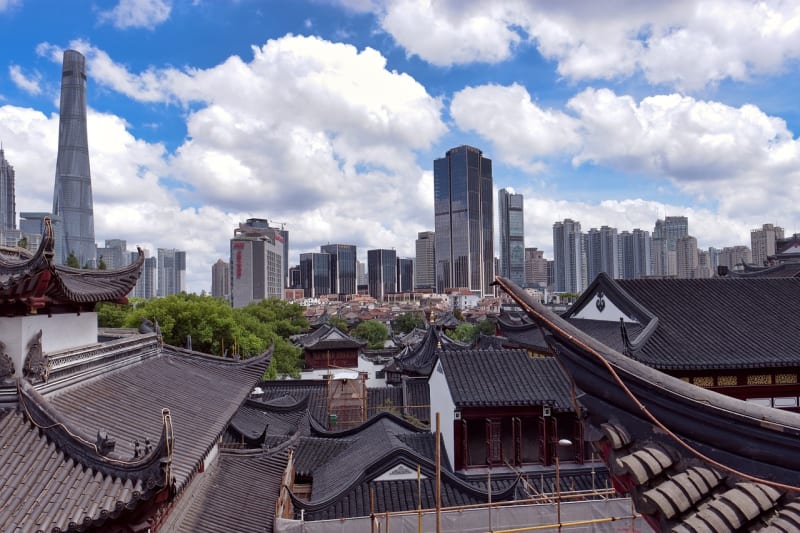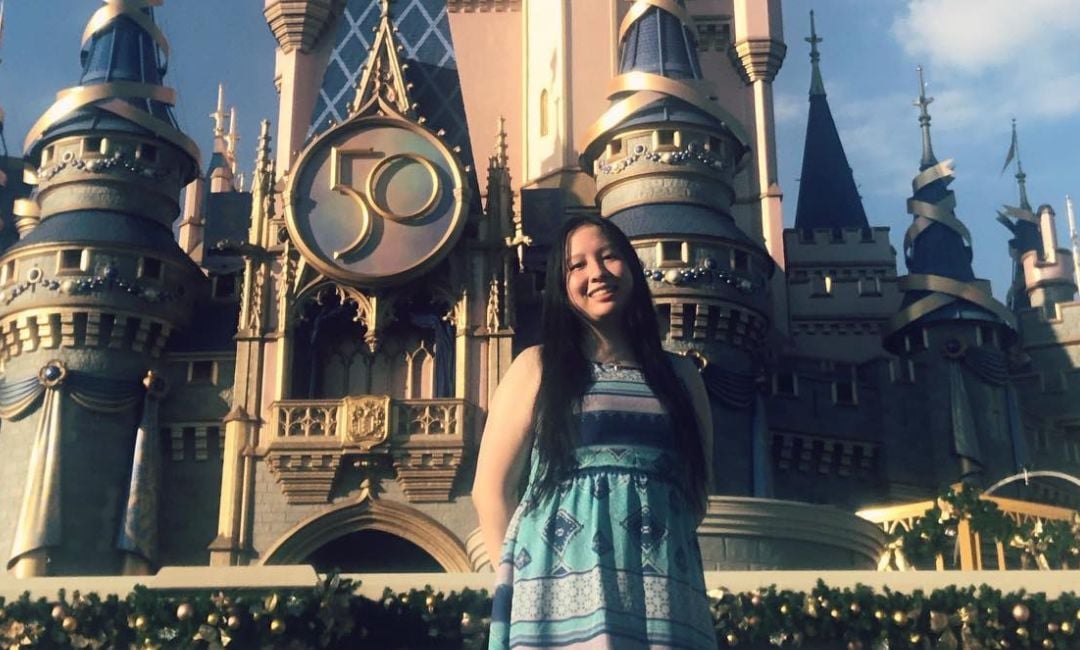Every city has a few important questions about them that define what they are broadly speaking. If you can answer those questions with authority, then the initial decisions you make about where you want to live will be based more soundly on your preferences and after your move, your expectations about what you expected will be met more effectively. For Shanghai, the first thing you need to know is that in many ways it’s not one city but two.
A tale of two cities
If you are flying in from overseas, chances are you will be landing at Pudong International Airport. It’s located on the eastern coastline of China about the latitude of the southern tip of Japan in in the Pudong District of Shanghai Municipality. The municipality is big – 6341 square kilometres big and it is an economic powerhouse that rivals the GDP of developed nations. Sitting fourth in Asia behind only Singapore, Hong Kong and Tokyo, Shanghai is the commercial and financial center of China. The economic engine driving Shanghai is Pudong.
At the heart of Pudong is Lujiazui Financial District, home to the iconic Pearl Tower, which locals hold in about as much esteem as Parisians do the Eiffel Tower. In the cluster of glittering high rises embraced by the Huangpu River are the companies that constitute the beating economic heart of China. In a mere 25 years, China created an entire world-class city from rice paddies. The Shanghai Stock Exchange has a market cap of 2.7 trillion USD – good for 6th on a list where the New York Stock Exchange and the NASDSAQ are numbers one and two respectively and only Tokyo has a higher cap in Asia.
As you make your way by private car or taxi from Pudong Airport (if you didn’t then you will eventually) you will pass through the Shanghai Free Trade Zone or FTZ. The area officially launched in 2013 and expanded to include most of the district all the way to the Huangpu River in Lujiazui. From a regulatory standpoint, this massive area is like a country within a country. To think of it as the laboratory where China’s future economic policies are tested would not be inaccurate.
This description should paint a picture of an area that has been planned for decades with one purpose – to drive economic growth in China as it powers itself to the number one economy in the world at some point in the future. What does that look like?
Pudong – a new China
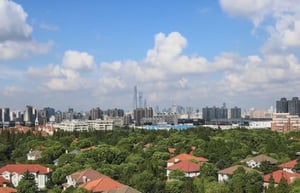 Pudong is spacious by Chinese standards. It has wide, well-planned streets, villa compounds centered around international schools and low rise structures for the most part. Jinqiao, the residential heart of Pudong, could easily be mistaken for suburbia in Europe or North America.
Pudong is spacious by Chinese standards. It has wide, well-planned streets, villa compounds centered around international schools and low rise structures for the most part. Jinqiao, the residential heart of Pudong, could easily be mistaken for suburbia in Europe or North America.
The cost of being one of humanity’s greatest economic accomplishments of the last century is that it’s a bit bland. You can’t manufacture history and culture, though one could argue that with the opening of Shanghai Disneyland, Pudong is more western than anywhere else in Asia. The point is that Pudong is new China. In fact, the proper name for the district is Pudong New District. So if continuity is an element of your relocation to Shanghai that you find important, then choosing a residential area like Jinqiao may offer the best Shanghai has to offer.
The other side of the river
Depending on whom you ask, you will get different answers about which of the two sides of Shanghai is the ‘real’ Shanghai. Residents of Puxi on the other side of the river in the historic political and cultural centre of the city would argue correctly that Puxi is the real Shanghai. Though not a particularly old city by Chinese standards, the Puxi area of Shanghai underwent a period of intense economic and architectural development in the first half of the last century that saw more square footage created than at any other time in Shanghai’s history, to this day. When you see how many construction cranes there are in the skyline at any one point for your self, the phrase ‘intense economic and architectural development’ is better understood.
The legacy of the partitioning of the city into foreign concessions is that in areas where the architecture has been preserved, you can be transported to a different time entirely. The single-family lane house of the concession areas were converted into small apartments from the multi-floor homes they used to be after the creation of the PRC. The result was that thousands of mini communities were created with common kitchens and communal areas. The real attraction to Shanghai from a visitors perspective is really the history of the city during its heyday and how it changed after the war.
Should you choose to live on the Puxi side of the river you can still have the residential life in Hua Cao Town which is about 45 minutes to the Bund at the center of the city. Though less developed than Pudong's Jinqiao neighborhood, Hua Cao is developing rapidly. The opening of the world’s largest transportation hub a short distance away has assured that the area will continue to grow at a rapid pace. In fact, the entire western side of the Puxi has been undergoing a 10-year transformation and is now a significant engine of commerce itself.
You will notice, whether you yourself actually share the opinion or not, that people who settle on the Puxi side tend to view Pudong as the second city and perhaps scoff quietly at living in suburbia. The term “Pujersey” is thrown around in reference to New York’s Garden State neighbour New Jersey. This might be truer if Manhattan was in New Jersey as Lujiazui is in Pudong. In any case, this reference is simply to provide you with an idea of how each area is perceived by their residents.
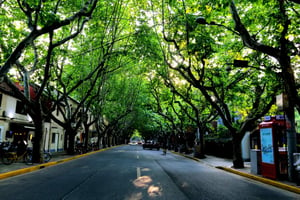 Understandably, the value for money, in terms of the average price per square foot, is noticeably less on the Puxi Side of the river – particularly in the Former French Concession. The French Concession, as expats tend to call it, has the best-preserved architecture from the concession period of Shanghai. In the summer, the London Planes (aka French Planes aka French Maples) that the French introduced and that line most streets, grow together so that many form a leafy tunnel protecting residents and visitors from the harsh summer sun.
Understandably, the value for money, in terms of the average price per square foot, is noticeably less on the Puxi Side of the river – particularly in the Former French Concession. The French Concession, as expats tend to call it, has the best-preserved architecture from the concession period of Shanghai. In the summer, the London Planes (aka French Planes aka French Maples) that the French introduced and that line most streets, grow together so that many form a leafy tunnel protecting residents and visitors from the harsh summer sun.
With the charm, beauty and authenticity of the French Concession comes the obvious trappings of life in a community designed over a century ago. Rush hour gridlock is common on the narrow, often one-way streets, though most who live there use public transport during busy times of the day. With only a light sprinkling of serviced and normal apartment blocks, the French Concession would be considered low density living in Shanghai.
Expat residents who choose to live in the French Concession and can afford it, tend to live in renovated lane houses that have been restored to the single family multi-floored dwellings that they were before World War II. Many of these residences have been turned into masterpieces of design and are priced as such. Most top-tier International schools on both the Pudong and Puxi side of the river have school busses that service the area.
However, if asked why they chose to live in the French Concession, most expats would cite the eating and drinking scene, which is world-class. Shanghai is consistently ranked the best city in China for expats because it has the polished suburban experience of neighborhoods like Jinqiao and the history and nightlife of the French Concession.
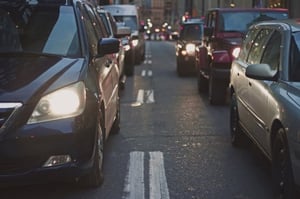 Residents of suburban areas of Shanghai (like Jinqiao on the Pudong side and Hua Cao on the Puxi side) all converge on downtown Shanghai for eating, drinking and entertainment - and spend about the same time getting there.
Residents of suburban areas of Shanghai (like Jinqiao on the Pudong side and Hua Cao on the Puxi side) all converge on downtown Shanghai for eating, drinking and entertainment - and spend about the same time getting there.
For those who have a driver, the suburban commute times for residents of Puxi or Pudong to downtown are about the same. With the rise in popularity and efficiency of ride hailing services like DiDi (China’s UBER) the primary suburban transport headache for expats has been solved. Previously, getting a taxi in suburban areas at difficult times of the day or in poor weather was difficult. Now, offering a tip to the driver is sufficient.
Shanghai becomes many things to many people but becomes the most to those who explore the city despite its challenges. So the answer to the first of the few questions that define Shanghai, broadly speaking, is that it is a tale of two cities. The answers to the other questions that define Shanghai are different for everyone.
